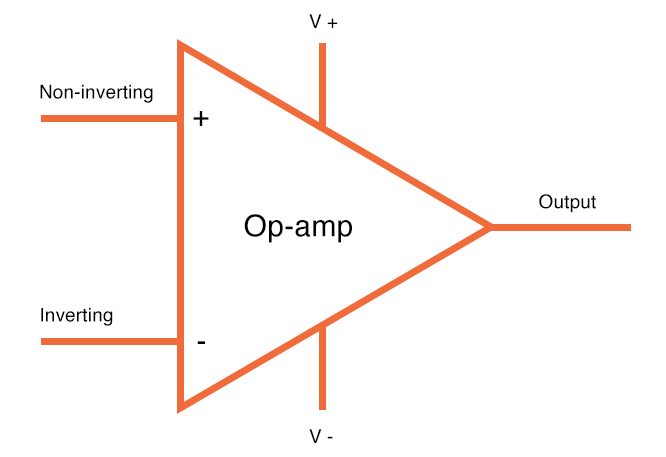What is an Operational Amplifier (Op-amp)?
Operational Amplifiers, also known as Op-amps, are basically a voltage amplifying device designed to be used with components like capacitors and resistors, between its in/out terminals. They are essentially a core part of analog devices. Feedback components like these are used to determine the operation of the amplifier. The amplifier can perform many different operations (resistive, capacitive, or both), giving it the name Operational Amplifier.

Example of an Op-amp in schematics.
Op-amps are linear devices that are ideal for DC amplification and are used often in signal conditioning, filtering or other mathematical operations (add, subtract, integration and d3.8.ifferentiation).
The operational amplifier is arguably the most useful single device in analog electronic circuitry. With only a handful of external components, it can be made to perform a wide variety of analog signal processing tasks. It is also quite affordable, most general-purpose amplifiers selling for under a dollar apiece. Modern designs have been engineered with durability in mind as well: several “op-amps” are manufactured that can sustain direct short-circuits on their outputs without damage.
One key to the usefulness of these little circuits is in the engineering principle of feedback, particularly negative feedback, which constitutes the foundation of almost all automatic control processes. The principles presented in this section, extend well beyond the immediate scope of electronics. It is well worth the electronics student’s time to learn these principles and learn them well.